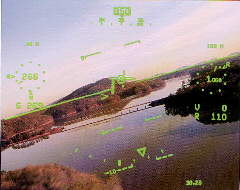 |
|||||
| Home | Research | For Teachers | HISTORY Level 1 Level 2 Level 3 |
PRINCIPLES Level 1 Level 2 Level 3 |
CAREER Level 1 Level 2 Level 3 |
| Gallery | Hot Links | What's New! | |||
| Web Administration and Tools | |||||
 |
|||||
| Home | Research | For Teachers | HISTORY Level 1 Level 2 Level 3 |
PRINCIPLES Level 1 Level 2 Level 3 |
CAREER Level 1 Level 2 Level 3 |
| Gallery | Hot Links | What's New! | |||
| Web Administration and Tools | |||||
![]()
Aircraft instruments have made spectacular advances since General Jimmy
Doolittle (a former Diceman) made the first “blind flight” over 60 years ago.
Instruments allow aircraft to fly safely in most weather conditions and to fly literally
anywhere on the globe. For example, the Instrument Landing System (ILS) allows a pilot to
land at airfields with ceilings (the bottom of a cloud deck above the ground) below 200
feet and visibility less than one fourth of a mile. The following is a summary of the
three basic categories of aircraft instruments -- Control, Performance, and Navigation.
The Heads Up Display (HUD) is a relatively new instrument that can provide data from all
three categories on one screen.
Control Instruments
These instruments display the aircraft’s attitude and readings on the engine(s). The
power indicators depend on the type of powerplant. Jet engines normally have tachometers
(engine speed indicator), fuel flow indicators, oil pressure, and temperature readings of
the engine.
Attitude Indicator
Performance Instruments
Performance instruments provide the basic parameters of the aircraft. They provide current
airspeed, altitude, rate of climb/descent and angle of attack.
Altimeter
Airspeed Indicator
Vertical Velocity Indicator
Navigation Instruments
These instruments inform a pilot where the aircraft is in relation to a navigation
facility or a selected point on the ground. For years, most aircraft navigated by
referencing ground based navigation aids (transmitting radio signals). Today, many
aircraft use the United States Air Force’s Global Positioning Satellites (GPS). This
system allows pilots to fly direct to their destination, saving fuel and time.
Horizontal Situation Indicator (HSI)
Heads Up Display (HUD)
A HUD is a glass plate that allows the pilot to view many control, performance, and
navigation displays while continuing to look outside the cockpit. It provides a wealth of
information superimposed on the glass plate located in front of the pilot. This technology
is now being used on products ranging from automobiles to camcorders.
 |
 |
|
| Typical HUD Presentation | F-15E HUD |
Send all comments to ![]() aeromaster@eng.fiu.edu
aeromaster@eng.fiu.edu
© 1995-98 ALLSTAR Network. All rights reserved worldwide.
| Funded in part by | Used with permission From 90th Fighter Squadron "Dicemen" Aviation |
Updated: February 24, 1999